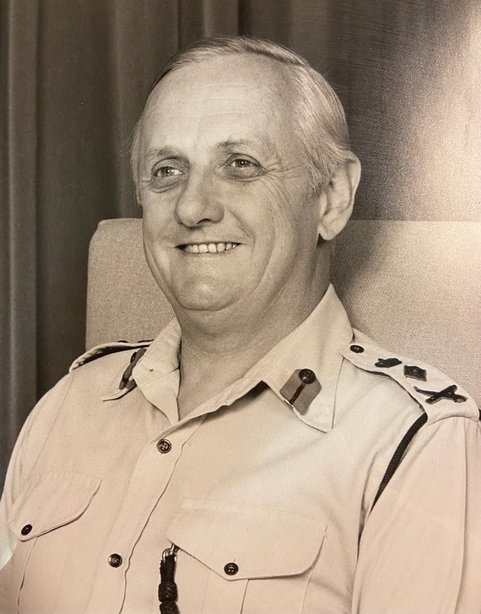A tribute to a legend and true friend of Nepal - Field Marshal Sir John Chapple GCB CBE DL
By Dr. Hem Sagar Baral

I first met Sir John while he was serving as the Governor of Gibraltar and since that time birded with him every time he was in Nepal. This first introduction took place in a meeting hall of the Royal Geographic Society, London in 1995. It did not matter how busy he was, he always spared some hours for birding on his trips to Nepal. Our favourite spot was, of course, the Phulchoki Mountain in the southeast corner of Kathmandu Valley. During his trips, other areas we visited were Koshi Tappu Wildlife Reserve, Chitwan National Park and Bardia National Park in the lowlands and Shivapuri Nagarjun National Park within the Kathmandu Valley.
Most times, Sir John would be staying at the British Embassy, and I would be called to meet him very early in the morning at the security gate of the Embassy. Security would let me in and I would be waiting for him at the gate. The Embassy would provide a vehicle to take us around. While in the field he knew his birds very well and could argue with logic on the ID of some of the birds we saw. At the end of the day, we would build a consensus on the IDs of any disputed bird we had seen. He would write up all birds in his notebook which he always carried with him. He had beautiful handwriting – the most beautiful handwriting I have ever seen. I always considered beautiful handwriting a gifted talent as after a while, my own handwriting becomes unfamiliar to me and hard to read!
Sir John's visits were very important from a bird conservation point of view in the country as he would lead that important advocacy and awareness to the high-level affluent Nepali. Within the Embassy I remember him persuading some British ambassadors and a defense attaché who remained good allies for conservation advocacy for me while they stayed in Nepal. I also had the pleasure of meeting some of the high-ranking Nepali army personnel during this course, some of whom I am still in touch with and are of great support for biodiversity conservation.
One of the years while visiting the UK with my birding friends, I met him by chance in a meeting at Cley Village Hall, Norfolk. After the meeting was over, we were invited to visit him and his wife Lady Annabel at their cottage a little up the hill. It was a fine little house in a beautiful and peaceful location. He maintained a very good library in the cottage and naturally my eyes would be skimming over the bookshelf looking for some bird books! He asked me if I liked any of the books in his library. He was kind to provide me three books from his library which form part of my own treasure trove. Here we spent time talking about birds and Nepal, had drinks together and before we left the cottage helped him to replace a flat tyre on his car.
During my 28 years association with him, I always found him full of praise for Nepali people. His support of biodiversity conservation in Nepal, especially through setting up the charity the King Mahendra Trust for Nature Conservation – UK Chapter - has been phenomenal. This charity has been renamed the UK Trust for Nature Conservation in Nepal and continues to support biodiversity conservation work in Nepal. Nepal's Central Zoo has a dedicated conservation education wing in his name - the Field Marshal Sir John Education Centre. Besides his support to improve the livelihoods of Nepali people, especially the Gurkhas with whom he spent many years during his successful military career, he will always be remembered very fondly and never forgotten.